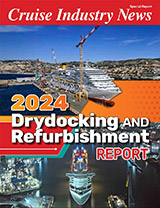Geiranger: Strict emission limitations have been set forth for vessels operating in Emission Control Areas (ECAs). By understanding and managing the business risks involved, the emission reduction requirements can be turned into business benefits. DNV is now launching an ECA Survival Kit.
Emission Control Areas (ECAs) have already been established in the Baltic Sea, the North Sea and along the North American coastlines. Other areas, such as the Mediterranean Sea, are expected to follow in the near future. The emission reduction requirements applicable within the ECAs will gradually be stepped up. The fuel sulphur content of any ship in an ECA after 2015 cannot exceed 0.1% or the exhaust gas must be purified to an equivalent level. And after 2016 NOx emissions from newbuilds must be reduced by approx. 75%. Compliance will become a ticket to trade in ECAs.
On the front foot
The emission reduction requirements will have severe implications for shipowners and charterers as well as for entire supply chains within the ECAs. Many possible actions can be taken, but the consequence of choosing a sub-optimal strategy may be costly. However, there are opportunities for smart navigation within the ECA regime. DNV advises operators to start preparing now to turn the upcoming 2015 and 2016 legislation into business benefits.
When seeking cost-effective emission reduction measures, operators should consider every technical, regulatory and operational requirement. Access to DNV’s repository of maritime expertise and a range of services is included in the survival kit. By following a process phase scheme, shipowners will be well prepared for the forthcoming ECA requirements.
The scheme consists of four phases:
1. Opportunity and risk identification
2. Strategy and planning
3. Implementation
4. Validation and documentation
LNG – the preferred alternative
On the technical side, there are three main solutions for ECA compliance; low sulphur fuel, scrubbers for exhaust gas purification or the ship can be fuelled by LNG. LNG as fuel is now a mature technology representing no technical obstacles. It is often more economical than the alternatives and is an environmental winner. DNV was the first class society to introduce rules for LNG-fuelled ships back in 2001.



